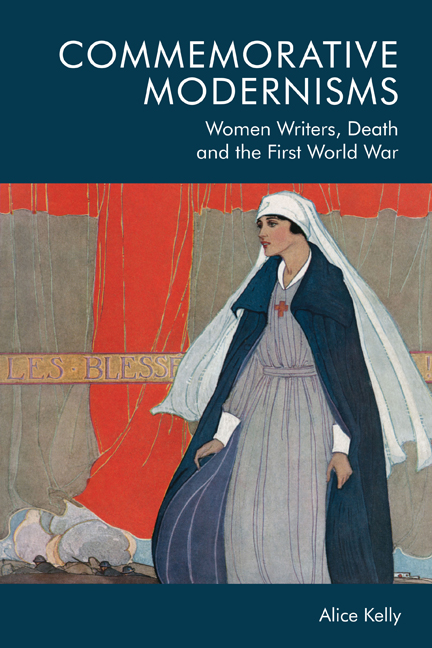Book contents
- Frontmatter
- Contents
- List of Figures
- Acknowledgements
- Dedication
- Introduction: A Culture Surcharged with Death
- Part One Death in Proximity: Wartime Commemorations
- Part Two Grief at a Distance: Civilian Modernisms
- Part Three Modernist Death: Postwar Remembrance
- Conclusion: Modernism’s Ghosts
- Bibliography
- Index
5 - Modernist Memorials: Virginia Woolf and Katherine Mansfield in the Postwar World
Published online by Cambridge University Press: 15 October 2020
- Frontmatter
- Contents
- List of Figures
- Acknowledgements
- Dedication
- Introduction: A Culture Surcharged with Death
- Part One Death in Proximity: Wartime Commemorations
- Part Two Grief at a Distance: Civilian Modernisms
- Part Three Modernist Death: Postwar Remembrance
- Conclusion: Modernism’s Ghosts
- Bibliography
- Index
Summary
I forget my first view of Molly, going down the Strand the night of the Cenotaph; such a lurid scene, like one in Hell. A soundless street; no traffic; but people marching. Clear, cold, & windless. A bright light in the Strand; women crying Remember the Glorious Dead, & holding out chrysanthemums. Always the sound of feet on the pavement. Faces bright & lurid – poor M.'s worn enough by that illumination. I touched her arm; whereupon she jumped, like some one woken. A ghastly procession of people in their sleep.
In a diary entry from mid-December 1920 Woolf recorded meeting the young writer Mary (Molly) Agnes Hamilton as a means of ‘enlarging her sphere’. After noting her thoughts about their conversation, Woolf ends her account with a memory of her last meeting with Molly: the evening of 11 November 1920, the day the Cenotaph had been unveiled by King George V in Whitehall at 11am, followed by the interment of the Unknown Warrior in Westminster Abbey. The enormous popularity of the temporary wood-and-plaster Cenotaph, designed by Sir Edwin Lutyens and erected on Whitehall on 18 July 1919, the day before the Victory Parade, had led to the Cabinet agreeing a permanent version on 30 July 1919, and construction began in January 1920 (see Fig. 5.1). The unveiling was part of the funeral procession of the Unknown Warrior, where the King first placed a wreath on the coffin on the gun carriage, before releasing the Union Jack flag that had been draped over the Cenotaph, followed by the Two Minutes’ Silence (for only the second time, after its introduction in 1919). The funeral cortege then processed to Westminster Abbey, where the Unknown Warrior was interred. Over the course of the week after the ceremony, an estimated 1.25 million mourners filed past the new permanent memorial, leaving flowers that reached 3 metres deep at its base.
Woolf's depiction of the scene, ‘like one in Hell’, is characteristically not focused on the Cenotaph itself. Woolf, walking down the Strand, would have met the mourners head-on, as they were encouraged to walk up the Mall and right on Whitehall to the Abbey, as they had at the Ceremony, but the numbers would have made it very busy in both directions (see Fig. 5.2).
- Type
- Chapter
- Information
- Commemorative ModernismsWomen Writers, Death and the First World War, pp. 193 - 229Publisher: Edinburgh University PressPrint publication year: 2020



